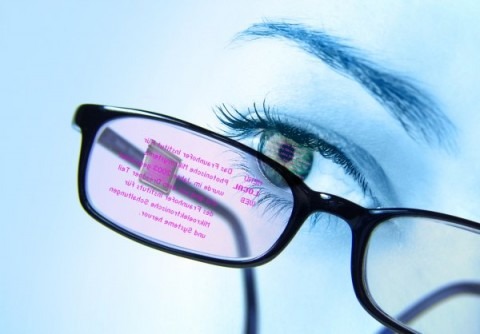AMOLED With Integrated Camera For Interactive Eyeglasses
The Fraunhofer Institute has been demonstrating a bi-directional OLED microdisplay, squeezing not only display pixels but camera photodiodes into the array. Currently a 320 x 240 prototype panel capable of 8-bit color, the Fraunhofer AMOLED could be used for heads-up displays, integrated into eyeglasses or used to track eye movement and perception in drivers.
Basically, the photodiodes each fit into a 12.4 micrometer gap between the 38.7 micometer OLED pixels. That allows the panel to both display information and capture an image of whatever is looking at it.
Peak luminance of the panel is less than 11,000 cd/m2, while it's rated at 500 cd/m2 brightness. It measures 19.3 x 17 mm.
The hope is to be able to create a wearable display, such as the one shown in the concept photo below, that could both display graphics and be controlled by eye movement. Fraunhofer's OLED panel could be hidden in the hinge of the eyeglasses, and the same prism that funnel its image through the lens and to the eye would also be responsible for bringing movement back to the sensor. No word on when we might expect to see commercial viability for the bi-directional AMOLED.

